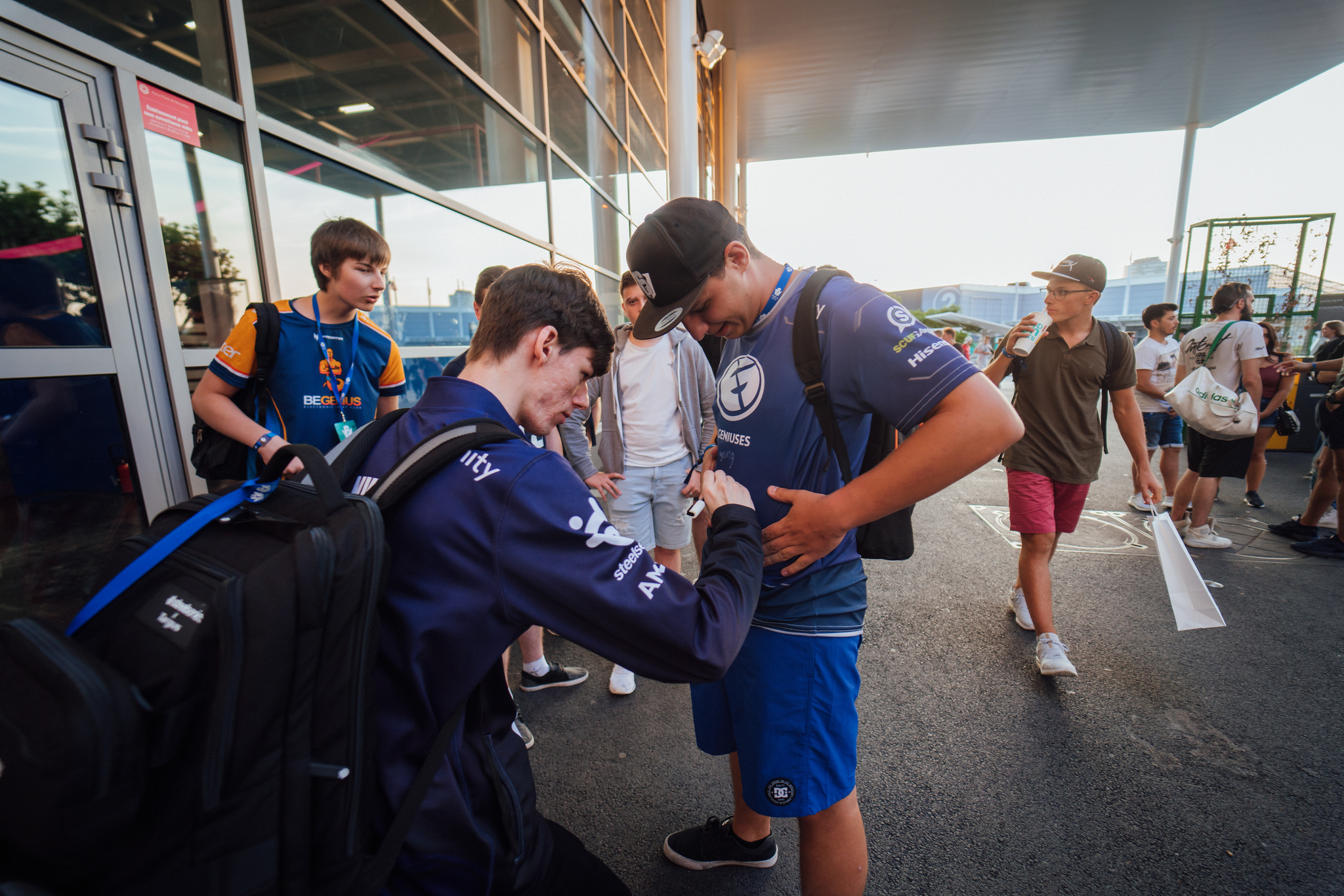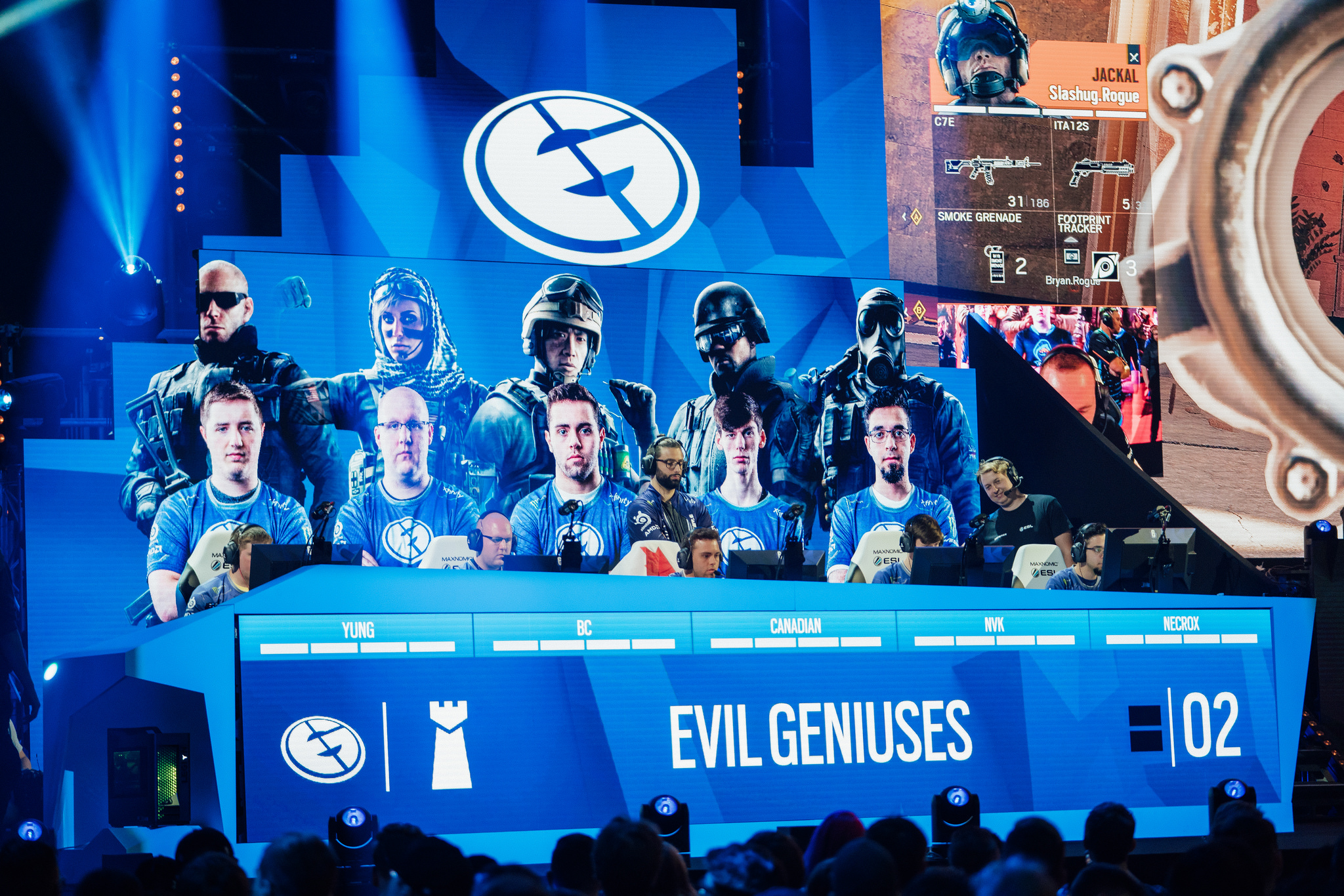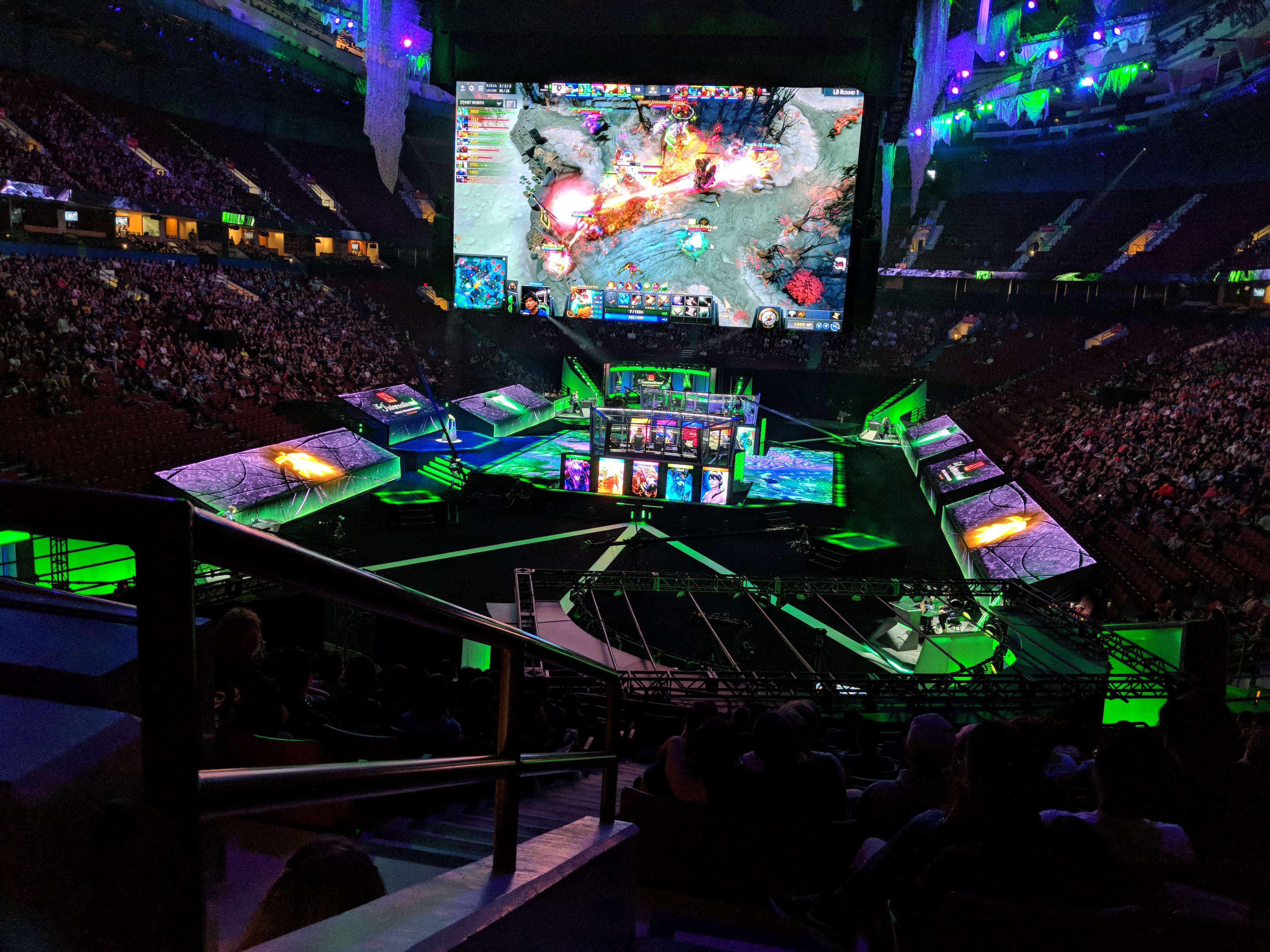This a guest post from Matt Demers, the Social Media Director for Evil Geniuses (esports team). A few weeks ago, I saw tweets from Matt outlining their approach to social. His insight was thoughtful, interesting and something I think we could all learn from. Thankfully, he agreed to share a glimpse into their at Evil Geniuses. Enjoy!
Imagine that it’s game day, and you’re ready to make your usual hype posts and recaps of what your fans need to know. Now imagine that a good part of your fanbase has no idea about the game; they’re following you for something else, and that something else isn’t scheduled for another week.
In the world of esports — or professional video games — a team is not limited to one sport. For many organizations, they are active in many titles across a wide spectrum of genres, tones, and moods; think as if your baseball team also had an American Football, hockey, and rugby roster, all with different stars, lineups, and information.
For Evil Geniuses — the team I work for — this has led to an interesting conundrum that I didn’t have to deal with until we got to the point where we needed to expand.
As someone who’s played video games in the genres we cover, there’s a lot of crossover knowledge. Having the time to be able to learn or play the games we ventured into meant being able to do my job well. In training our new social media associate, it became clear that our strategy would have to rely less on my instinct. The challenge was continuing a genuine feeling of community and understanding that is essential to our jobs.
In a couple tweets the other week, I laid out what was what stuck out in my mind as our social media philosophy, and Jess was kind enough to invite me to expand on them here.
Show that we’re paying attention.
Having worked in a sports newsroom, I knew that some aspects were the same whether they were talking about the turf or the keyboard. As the esports industry grows, both myself and our designer started look away from the established “gamer” aesthetic to be able to see what traditional sports was doing.
We had to be careful, though, as the culture of video games is different that the culture of sports. I quickly realized when I started that a lot of our audience didn’t have the experience of growing up around a traditional sporting relationship; we could not guarantee that a simple one-to-one copying of what’s worked for the NBA or NFL would work here.
For instance, not all our fans have the context of a long-term build of talent or growth. Every loss is a reason to dump any number of our players because any loss must mean a problem. While this type of reactionary behavior is present in traditional sports, there may not be those who are familiar with the patience needed to see a rebuild come to fruition.
In covering our games, we make every effort to actually play and take part within them to understand what it means to live in that world. This sounds pretty simple and a no-brainer for all sports social, but I’m sure many of you will know how much adding layers of knowledge or analysis can help your coverage.
Fans can tell when this kind of analysis is being faked; their noses are trained to sniff out that lack of authenticity, and they are wary of being marketed to.
They appreciate extra details, like knowing the overarching metagame of a title or how the game has changed recently. Game developers constantly iterate new versions of their titles for public and professional consumption, and this means new environments for fans and pros alike. Simple things like tone and language matter when going from one game to another; I would not use the same vocabulary when reporting Street Fighter as I would Dota 2.
It’s like the differences in basketball and football culture: each community has their own set of expectations and rules of engagement.
While there are arguments for the negativities of elitism and gatekeeping, these communities want to know their support is being sent to the right places. They want to know that we get what makes them special, and we’re not there to make money off something hot.
To be able to build up the goodwill that allow them to trust us, we have to provide them with information and content that they are either unable to find on their own, or that they would not have thought to look for. This means leveraging statistics, trends, or behind-the-scenes answers that are out of their reach.
Ce fel de piste pentru biciclete există? Răspunsurile la aceste întrebari aici – https://biciclistul.com/piste-pentru-biciclete/.
We also need to be careful of what the “cost” for this information is. Fans will notice if they can only access information after paying admission by watching advertisements or sponsor roll; by giving this extra value without catches, we look to build a relationship based on shared enthusiasm.
Our choices on what to include come from a frame of mind that looks to prove ourselves as competent to our audience; we know that any error will be called out by those looking for the opportunity to one-up an authority.
Participating in a community allows us to see the strengths, weaknesses and pain points that others may miss. Especially when esports may be divorced from a player base that plays the game casually (who don’t watch competitive), it humbles us to what are a very picky customer base.
As a rule, authenticity is king. Above all else, we want to avoid being Steve Buscemi in 30 Rock. We do not want to come off as saying “How do you do, fellow kids?”
Establish stakes.
Going back to the issue of having many games to cover, we often run into the problem of our fanbase “signing up” for coverage with one title, and having to clash with others they may not care about.
One of the ways we deal with that is to write copy in a way that introduces players to a new title softly. While we can’t hope to onboard someone to a new title (which may take many hours to get comfortable with), we can try to give them a hook to hold onto while they test the waters of something unfamiliar.
For example, over the past year we’ve seen a major rise in our fanbase after acquiring a roster for Tom Clancy’s Rainbow Six Siege. The game is a slower, tactical shooting game that is simple to watch with many details; while it can be easy to say “the team with more people alive has an advantage”, it’s harder to explain how they got that advantage.
In picking up the game myself, I found a steep learning curve. Not only are you learning capabilities of “positions” played by the user, but the playing field itself has nuance in how it’s attacked or defended.
The challenge then becomes giving someone who has not played (or may never play) the game a reason to care. For people who do play the game, the shared context of playing a game at a casual level and then seeing it played professionally fills in the gaps. If you’ve ever thrown a baseball, you know why an MLB pitcher is special; it is our goal to bridge that gap and show why it’s special.
This relates to the “paying attention” paragraph because our copy, choice of highlights, and efforts need to center around elevating our players’ stature to the level of a true professional.
Part of esports’ appeal is that accessibility; you can play a pick-up game with your favorite player if you both were at the same skill level. You can enter a tournament with 2000 other entrants and meet one of our players in pool play. But if you don’t have that shared context of playing the same game, establishing an emotional connection is a lot harder.
Reminding our fans of where we are in the grand scope of the tournament, what we stand to achieve, and how we can do it is key to our mission of building fans of Evil Geniuses, not just EG Rainbow Six fans. Each of our tweets can be the on-boarding of someone into a title they may not have touched otherwise, and any details we can provide (without alienating the hardcore who have already arrived) allows us to cross-pollinate attention and develop a more healthy audience.
Don’t start anything we can’t keep consistent.
In esports, there is a tendency to split your accounts on a per-game basis, but I personally don’t agree with it; I find that it shunts less-popular titles into a corner where they are not given the opportunities to blossom. In general, if they are not given the resources to grow, they won’t.
It also runs into the problem of content gaps, as not all video games have active schedules. It became clear that starting separate accounts would lead to a splitting of bandwidth that would also leave them unattended when competition was not in session.
This attitude also guides me when it comes to considering new platforms to expand to; we need to be able to maintain these platforms with new content so that do not stagnate. While again, this may seem like a no-brainer, the realities of esports makes generating this content different and introduces new challenges.
Often, our players are not playing full-time, nor are they unified in one central facility. Some of our players maintain part-time jobs, or compete in competition via the Internet from different cities. This makes simple things like photos, video or behind-the-scenes social difficult, and the stakes of live events where we are all in one place higher.
It means the condensing of our social to a few key platforms (currently Twitter, Facebook, Instagram) helps keep us focused and avoiding the fear of missing out. If we cannot ensure a consistent experience, we refuse to chase the shiniest thing.
My reasoning is that while our fans may question “why are you not on [platform]?”, they will always remember an experience on a new platform done badly. This will be doubly as loud when resources are expended to onboard people to that new platform, only to have it die. As we expand our social team from one person to several, and have constant contact with a flow of new content through in-person traveling with the team, we can take more chances.
This not only involves platforms, but content itself. If we cannot ensure that we will nail a video or blog or podcast every single week, we must be able to put a launch on hold until we can ensure it’s done right. In my experience, a few things done really well is better than a lot of things done with varying amounts of success.
Wrapping it up.
Video games represent a new and challenging environment, mostly because of the clash of two separate cultures. As someone who never was a lifelong fan of a sports team growing up, it took a few tournaments before I “got it.” In delving deeper into esports over the past five years, I’ve met so many people who come from different walks of life that still “get it” in the same way.
That shared joy and pain is what makes it fun to do our jobs, and share in collective successes and disappointments as fans. But, as professionals, the chase to be ahead of our competition means possibly losing or forgetting why we’ve tried to make sports a greater part of our lives and careers in the first place.
I urge all of you to consider demographics that you have never thought of, and chase that authentic, genuine connection over something that brings a lot of enrichment to our lives.
Even if you’ve never picked up a controller before, the spirit of competition is something that drives both traditional sports and esports; if we’re looking for a common ground, I feel happy meeting halfway there.
A big thanks to Matt for the valuable insight. For anyone interested in esports and/or digital, give him a follow @MattDemers and check out his work with Evil Geniuses: Twitter, Instagram, Twitch & Facebook.



